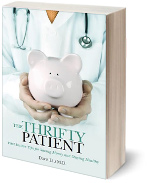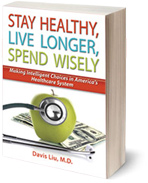FRONTLINE – In the Age of AI – Andrew Yang
Original November 5, 2019, PBS FRONTLINE episode In the Age of AI –
DONATE NOW to Andrew Yang – for President
This excellent must-see two hour documentary is divided into five parts. The part most relevant to Democratic presidential candidate nominee, Andrew Yang, that automation and the fourth industrial revolution will be economically and socially disruptive, are laid out here.
IN PART TWO – THE PROMISE
Alex Rodrigues, CEO of Embark, notes that “keen insights on how gigantic advances in AI make [self-driving trucks] possible.” In a later segment, Rodrigues notes that in “less than half a decade”, we can expect trucks loaded with freight to drive themselves with no one inside (35:00)
Microsoft president, Brad Smith, notes that “artificial intelligence will reshape every aspect of our economy and so many aspects of our lives.” AI is like electricity in that everyone will use it including governments, non-profits and will provide benefits and challenges. (34:13)
Andrew McAfee, MIT research scientist and co-author of the Second Machine Age, notes in the below graph that human development and growth is essentially flat and stagnant for thousands of years despite advances in civilization, science, and mathematics. Yet, the numbers change “in the blink of an eye at one point in time” to completely vertical. What happened was the Industrial Revolution where humans for the first time “overcame the limitations of our muscle power.”

McAfee notes that what is happening now is equally as important. With AI, we are “overcoming the limitations of our minds.”
Sociologist Steve Viscelli, who researched the trucking industry in “The Big Rig” notes that with the decline of trucking unions in the 1980s, what they earned in today’s dollars or $100,000 annually is not just more than $40,000. There had been “four decades of rising inequality of wages” and this is why they fear automation (35:00) [RELATED – Penn sociologist Steve Viscelli on the trucking industry]
In PART THREE – The FUTURE OF WORK
Nick Thompson, Editor in Chief at Wired magazine notes how the periodical evolved from a champion of technology to an observer and he feels that there are many in Silicon Valley who fear that AI is different. The disruption in labor force will be unprecedented and will the public blame them? (41:57). [Related – Andrew Yang in Wired magazine]
Kai- Fu Lee, author of AI Superpower: China, Silicon Valley, and the New World Order, believes that “50% of jobs are somewhat or extremely threatened by AI in the next 15 years or so.” White collar jobs will be the easiest to take as they are “a pure qualitative analytical process”. Software can replace “reporters, traders, telemarketers, telesales, customer service”.

Lee describes AI as a “once in a blue moon occurrence” and that using pattern recognition from past historical incremental technological changes is inaccurate to the level of disruption that is about to occur. He says only the “steam engine, electricity, and the computer revolution” are a comparable magnitude as AI revolution. AI is different because it replaces the entirety of our cognitive processes and can do so better.
In 2013, two Oxford researchers, Carl Frey and Michael Osborne concluded that 47% of jobs in the US were vulnerable to AI automation. Frey notes that a similar analogous technological disruption occurred during the British Industrial Revolution where wages did not grow for 90 years and living standards declined.
Saginaw, Michigan.
Harry Cripps, autoworker and local UAW president reflects on how automation decimated his community over the past 40 years (50:23). Even in the current economy, unemployment is 6% and poverty over 30%. The average personal income is $16,000 a year. A factory which in the 1970s had 7500 UAW workers currently needs only 700 workers with the addition of automation. A 90 percent decrease. “Robots.. don’t buy cars.. buy sandwiches… and the definitely don’t pay taxes, which provides the infrastructure, the sheriffs, the police, and the firemen and anyone else who supports the city is gone”.
At MIT researcher McAfee notes that in the past productivity and income and pay used to move together. However over the past few decades it has become decoupled. With more automation, workers either become unemployed or take on less-skilled and lower paying jobs.

McAfee continues. “there are plenty of factories in America. We are a manufacturing powerhouse. But if you go walk around an American factory, you do NOT see long lines of people doing repetitive manual labor. You see a whole lot of automation. If you go upstairs in that factory and you look at the payroll department, you see one or two people looking into a screen all day.. the activity is still there, but the number of jobs is very very low because of automation and tech progress.”
“Now dealing with that challenge and figuring out what the next generation of the American middle class should be doing is a really important challenge. Because I’m pretty confident that we are never again going to have this large, stable, and prosperous middle class doing routine work.” (53:32)
Job Loss Due to Automation. Not offshoring.
In the popular telling blame for widespread job loss has been aimed overseas, at what’s called offshoring. (56:00)
We want to keep our factories here, we want to keep our manufacturing here. We don’t want them moving to China, to Mexico, to Japan, to India, to Vietnam.
But it turns out most of the job loss isn’t because of offshoring.
I think offspring is responsible for maybe 20% of the jobs that have been lost. I would say most of the jobs that have been lost, despite what most Americans thinks, was due to automation or productivity growth.
Mike Hicks, economist at Ball State University and Emily Wornell, sociologist have been documenting employment trends in Middle America.
Hicks says that automation has been a mostly silent job killer, lowering the standard of living.
“So, in the last 15 years, the standard of living has dropped by 15, ten to 15 percent. So, that’s unusual in a developed world. A one year decline is a recession. A 15-year decline gives an entirely different sense about prospects of a community and so that is common from the Canadian border to the Gulf of Mexico in the middle swath of the United States.”
Toxic Mix – Americans have no financial cushion to make the adjustments in work.
Molly Kinder (59:54) studies the future of work at a Washington think tank.
“How many people have gone into a fast food restaurant and done a self ordering? Panera for instance is doing this. Cashier was my first job and in where I live in Washington DC, it’s actually the number one occupation for the greater DC region. There are millions of people who work in cashier positions. This is not a futuristic challenge, this is something that’s happening sooner than we think.”
“in the popular discussions about robots and automation and work, almost every image is of a man on a factory floor, or a truck driver. And yet, in our data, when we looked, women disproportionately hold the jobs that today are at the highest risk of automation. And that’s not really being talked about, and that’s impart because women are over-represented in some of these marginalized occupations like a cashier or avast-food worker. And also in a large numbers in clerical jobs in offices, HR departments, payroll, finances, a lot of that is more routine processing information, processing paper, transferring data. That has a huge potential for automation. AI is going to do some of that, software, robots are going to do some of that.
Workplace of the future will demand different skills and Kinder notes that gaining them will depend on who can afford to do so.
“There has been some excellent research that says half of Americans couldn’t afford a $400 unexpected expense. And if you want to get to $1000, there’s even less.
So imagine you’re going to go without a month’s pay, two month’s pay, a year. Imagine you want to put savings toward a course to redevelop your career. People can’t afford to take time off of work. They don’t have a cushion, so this lack of economic stability, married with the disruptions in people’s careers, is a really toxic mix.
Steven Berkenfeld, Investment banker
Every company is looking at all of the disruptive technologies, could be robotics or drones or block chain. And whatever it is, every company’s using everything that’s developed, everything that’s disruptive, in thinking about, “How do I apply that to my business to make myself more efficient? And what efficiency means is, mostly, how do I do this with fewer workers?
Inequality is rising in America.
It used to be that the top 1% of earners – here in red – owned a relatively small portion of the country’s wealth. Middle and lower earners – in blue – had the largest share. Then 15 years ago, the lines crossed. And inequality as been increasing ever since.

“There’s many factors that are driving inequality today, and unfortunately artificial intelligence without being thoughtful about it – is a driver for increased inequality because it’s a form of automation and automation is the substitution of capital for labor. And when you do that, the people with the capital win.
So Karl Marx was right. it’s a struggle between capital and labor and with artificial intelligence we’re putting our finger on the scale on the side of capital, and how we wish to distribute the benefits, the economic benefits, that will create is going to be a major moral consideration for society over the next several decades.”
Jerry Kaplan, Computer Scientist and Entrepreneur
” This is really an outgrowth of the increasing gaps of the haves and have nots. The wealthy getting wealthier, the poor getting poorer .It may not be specifically related to AI. AI will exacerbate that and that will tear society apart, because the rich will just have too much, and those who are have-nots will have perhaps very little way of digging themselves out of the hole. And with AI making its impact, it will be worse.
Kai-Fu Lee, CEO Sinovation Ventures
The public didn’t like the direction things were going.
I think the Trump vote was a protest. I mean that for whatever reason, whatever the hot button, was that really hit home with these Americans who voted for him were, it was a protest vote. They didn’t like the direction things were going.
Now I’ve got a group of people at the top making all the money and I don’t have anybody in the middle that can support a family. So do we have to go to the point where we crash to come back? And in this case, the automation is already going to be there, so I don’t know how you’ll come back.
I’m scared. I’m going to be quite honest with you, I worry about the future.not just of this country but the entire globe. If we continue to go in an automated system, what are we going to do?
I really worried about where this leads us in the future.
Harry Cripps, President, UAW local 668, Saginaw, Michigan


 Get important exclusive advice and tips on how to save money while staying healthy.
Get important exclusive advice and tips on how to save money while staying healthy. Learn how to make intelligent choices in America's Healthcare System.
Learn how to make intelligent choices in America's Healthcare System.